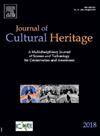在交互式web应用程序中嵌入文物x射线计算机断层扫描数据——将旧的技术工具带回新颖的虚拟生活
IF 3.3
2区 综合性期刊
0 ARCHAEOLOGY
引用次数: 0
摘要
x射线计算机断层扫描(CT)已经成为保护人员、历史学家和考古学家以一种非破坏性的方式检查博物馆物品内部的常用方法。本文演示了CT数据集的另一个应用。我们展示了如何处理这些数据并将其转换为嵌入网络应用程序的交互式计算机动画模型,从而将历史对象带回新颖的虚拟生活。这为博物馆参观者在现场和在线展览中与虚拟物品互动开辟了一种新的方式。在所有阶段使用可免费获得的软件,确保公共机构仍然可以获得所涉及的费用。该方法通过三种具有历史意义的技术工具进行了演示,这些技术工具跨越了三个世纪的海上航行:一个袖珍日晷,一个航海计时器和一个袖珍气压计,制造于18、19和20世纪初。每个对象都有自己的属性和特征,这些属性和特征需要沿着数据处理链使用不同的方法和解决方案。这些链的结果是交互式应用程序,展示了旧仪器的功能。这有助于更好地了解他们的运作模式,并可以将参观者的注意力集中在个别技术细节,材料组成和外观,或其他具有历史意义的属性上。虚拟对象的可访问性和吸引力导致更身临其境的交互体验,促进更好的知识传递给游客。本文章由计算机程序翻译,如有差异,请以英文原文为准。

Embedding of X-ray computed tomography data of cultural heritage objects in interactive web applications – old technical instruments brought back to novel virtual life
X-ray computed tomography (CT) has become a common method for conservators, historians and archaeologists to examine the interior of museum objects in a non-destructive way. This paper demonstrates an additional application of CT data sets. We namely show how the data can be processed and converted to interactive, computer-animated models embedded in web applications to bring back the historical objects to novel virtual life. This opens up a new way for museum visitors to interact with the virtual objects in both on-site and online exhibitions. The use of freely accessible software at all stages ensures that the involved costs remain accessible to public institutions. The approach is demonstrated using three technical instruments of historical significance spanning three centuries of maritime navigation: a pocket sundial, a maritime chronometer, and a pocket barometer manufactured in the 18th, 19th and early 20th centuries. Each object presents its own attributes and characteristics that require different approaches and solutions along the data process chains. The outcomes of these chains are interactive applications demonstrating the functionalities of the old instruments. This contributes to a better understanding of their modes of operation, and can focus the attention of the visitors to individual technical details, material composition and appearance, or other attributes of historical significance. The accessibility and appeal of the virtual objects results in a more immersive interaction experience facilitating a better transfer of knowledge to the visitors.
求助全文
通过发布文献求助,成功后即可免费获取论文全文。
去求助
来源期刊

Journal of Cultural Heritage
综合性期刊-材料科学:综合
CiteScore
6.80
自引率
9.70%
发文量
166
审稿时长
52 days
期刊介绍:
The Journal of Cultural Heritage publishes original papers which comprise previously unpublished data and present innovative methods concerning all aspects of science and technology of cultural heritage as well as interpretation and theoretical issues related to preservation.
 求助内容:
求助内容: 应助结果提醒方式:
应助结果提醒方式:


